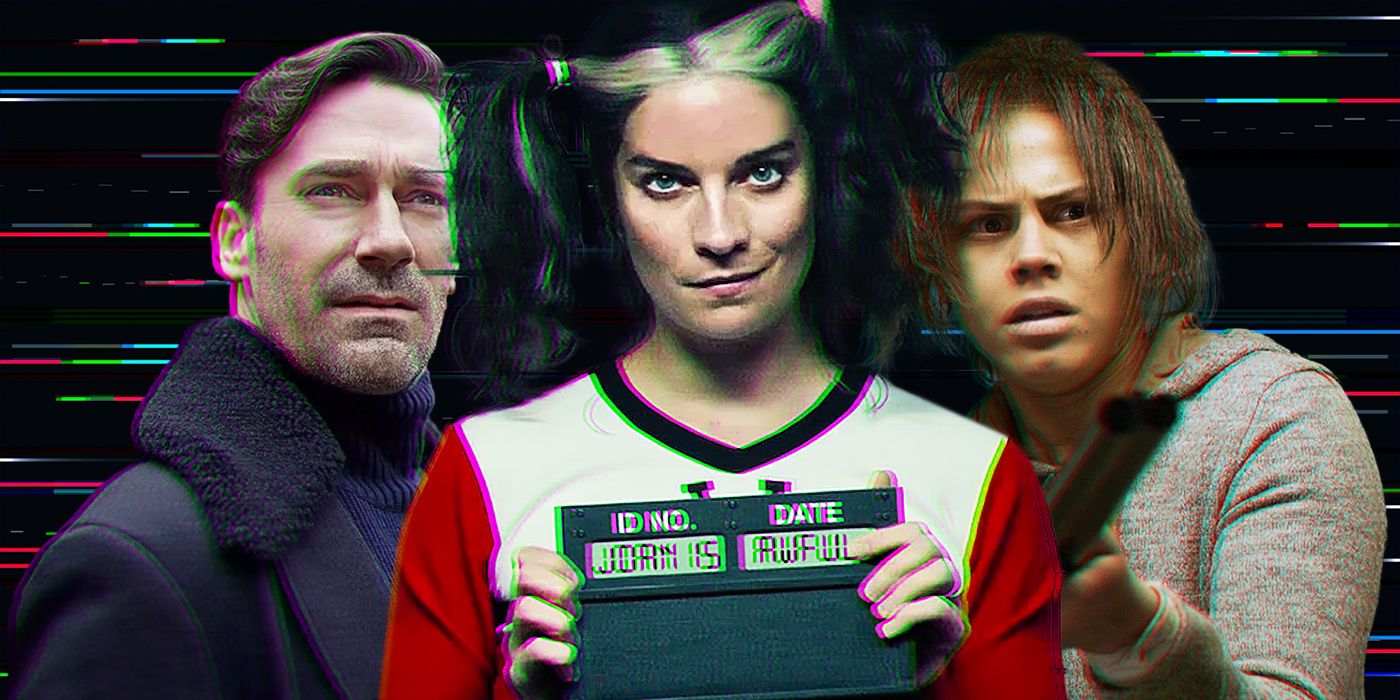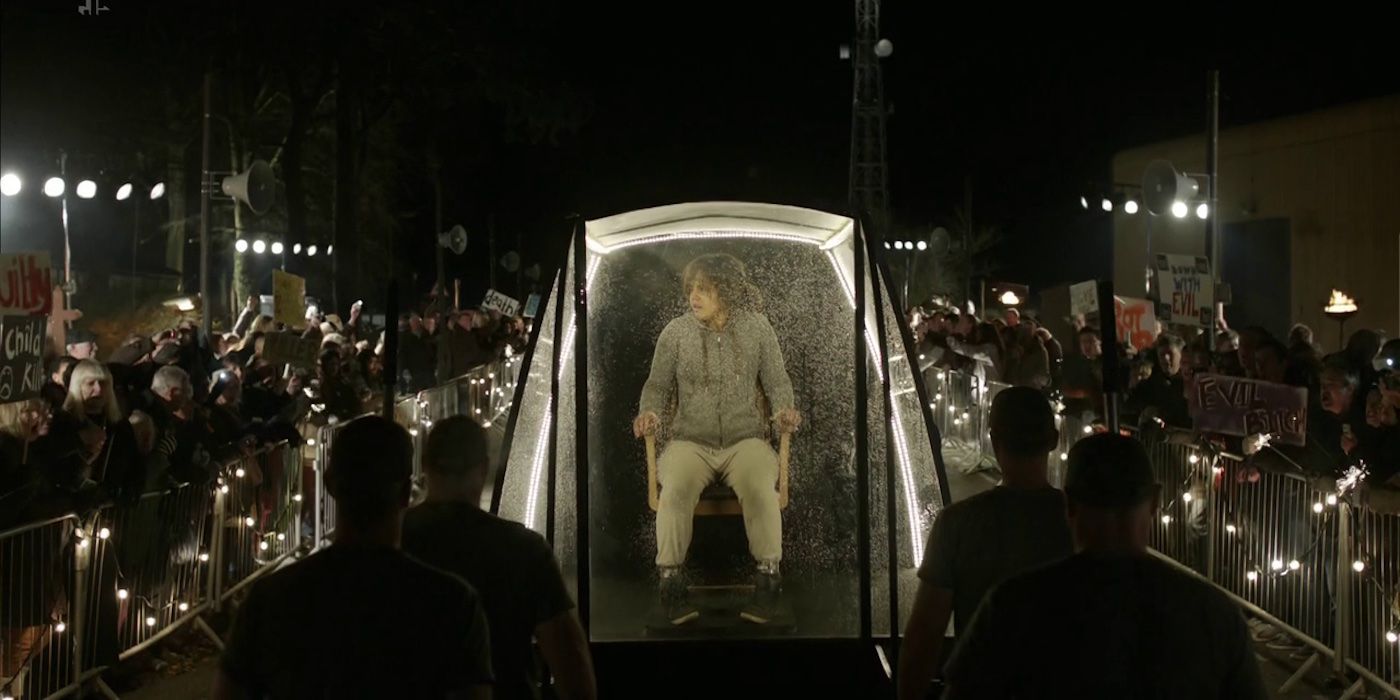The Big Picture
- The White Bear symbol in Black Mirror is a recurring motif that hints at the show’s broader universe and its connection to a previous controversial episode.
- The symbol represents power and control, and it is linked to consumerism and the manipulation of reality in various episodes.
- The meaning of the symbol can change depending on the episode, and it could be interpreted as a tool for propaganda or a commentary on voyeuristic audiences.
Season 6 of Black Mirror had an abundance of hidden references to previous seasons of the sci-fi show for eagle-eyed fans. This plethora of Easter eggs included a recurring motif in the series that popped up a number of times in the new episodes. The reference in Black Mirror hints at the show’s broader universe(s) and is a callback to a previous, controversial episode of Season 2: “White Bear.” One key significance of this symbol is how it relates to consumerism and how we personally engage with narrative and the toll it might take.
To summarize: “White Bear” tackled vigilante culture and press witch-hunts via child-killer Victoria Skillane’s (Lenora Crichlow) punishment-as-entertainment in a simulated reality. Our sympathies are aligned with the character until the revelation at its conclusion floors the audience. Victoria spends the episode in a panicked, traumatized state, and it is an early example of Charlie Brooker’s obsession with telling stories about interactive storytelling. The fork-shaped symbol is featured prominently in the episode, and it was assumed the White Bear logo was tied up with the United Kingdom’s Ministry of Justice. It is in this instance, but it’s also more insidious and widespread than was originally believed.
Black Mirror
An anthology series exploring a twisted, high-tech multiverse where humanity’s greatest innovations and darkest instincts collide.
- Release Date
- December 4, 2011
- Cast
- Douglas Hodge, Brian Pettifer, Jessie Cave, Hannah John-Kamen
- Main Genre
- Sci-Fi
- Rating
- TV-MA
- Seasons
- 6
‘Black Mirror’s White Bear Symbol Is Unpacked In “Bandersnatch”
The Black Mirror special “Bandersnatch” is the most concept-based episode of the show to date — a choose-your-own-adventure style episode with the viewer deciding the outcome, full of clever in-jokes and allusions to the extended Black Mirror universe. In the movie, the symbol is unpacked with a greater focus than before, offering us some answers regarding its origin.
In 1984, Stefan (Fionn Whitehead) is a young computer game programmer adapting controversial author Jerome F. Davies’ (Jeff Minter) choose-your-own-adventure book Bandersnatch. Jerome F. Davies suffered a psychological breakdown and decapitated his wife following a period of time of questioning the nature of reality. According to Davies, the symbol represented diverging reality or realities. It was a fork in the road in the multiverse. He was convinced free will was an illusion and faith was dictated by a puppetmaster, and that we are pawns in a malevolent universal game. The author believed he was controlled by a guiding force, an outside power, leading to him murdering his wife at the behest of a demon called Pax and covering the walls of his studio with the symbol, in blood.
Is it possible the symbol is demonic in origin? It was also carved into the talisman that Nida (Anjana Vasan) finds in Season 6’s “Demon 79,” and Gaap (Paapa Essiedu) is a demonic entity from The Key of Solomon. The White Bear symbol is defined by one thing: power, as we see Stefan fall under the influence and become fixated on it over the course of “Bandersnatch.”
What Does the White Bear Symbol Mean in ‘Black Mirror’?
In “Bandersnatch,” the acronym P.A.C.S. (Power and Control Study) is referenced a number of times throughout the episode. Stefan finds a confidential file with a detailed account of his life, an accumulation of photographs, and information pertaining to his life. Embossed on the paper is the symbol, suggesting it is part of a larger organization operating in secrecy. No aspect of your life is off-limits, and it chooses to place people under observation.
We see the symbol again painted on the walls of David’s (Josh Hartnett) home by the Manson-like cult in Season 6’s “Beyond the Sea,” right before they subjugate and murder his family. Brutal tactics are informed by dominance and a need to control. Did White Bear start out as an underground cult/government with far-right/left leanings? The cult members were virulently anti-tech, so is it an Aleister Crowley-like group practicing magic? In “Bandersnatch,” tech and interactive media are the main themes. Does the symbol or power behind it change depending on who it is manipulating?
Another overlapping idea is how reality is manipulated and reconstructed for consumers. The cult figures are well aware their actions will become an infamous story in the history books. In “White Bear,” Victoria’s endless punishment is a crowd-pleasing game, and showmanship is a major part of Michael Smart’s (David Shields) political campaign (so much of politics is audience manipulation) in the vision that plays out in “Demon 79.” Maybe Brooker’s intention with the symbol is to keep the story purposely vague, or perhaps who (or what) is behind the scenes relishes control, infiltrating stories, and messing with reality — much like Black Mirror itself.
The Use of the White Bear Symbol Depends on the Episode Itself
How we interpret the White Bear symbol is determined by the episode we’re watching. It could be an agent of chaos with its sole aim to disrupt and destroy. What if it is a sly dig at audiences, chastising us for our voyeuristic delight in watching these people suffer? From the evidence, the throughline is apparently power and control. The White Bear symbol in the historical episodes belonged to some kind of cult. Was it a grassroots order, and how has it grown in the intervening years? Maybe politics kickstarted into something bigger. Michael Smart’s future campaign would indicate a far-right individual growing in power and might have ties to an earlier, more criminal iteration of the organization.
By the time “White Bear” happens, it has infiltrated the British justice system, and Michael Smart could have been in power at some point. Again, it all comes back to the observational nature of the story, the power of the all-seeing eyes and creator. Storytellers, fascists, and politicians have the power to subvert identity, change established order, rewrite history, and narrate other people’s stories. The symbol is a powerful tool for propaganda: it steers people and inspires and provokes audiences.
In the wake of Season 6’s “Demon 79,” Brooker’s universe has changed in a fundamental way. Introducing horror story elements to Black Mirror under the Red Mirror label will almost certainly ensure the White Bear symbol will reappear in another installment, with a strong possibility of addressing the symbol more in-depth and exploring where it came from. The White Bear can pop up anywhere, anytime, without explanation, in this universe or another. We’ll just have to wait and see. In the meantime, our other hope is that the demon Gaap may one day have another Black (or Red) Mirror episode entirely devoted to him.
Black Mirror is available to stream on Netflix in the U.S.
Watch on Netflix





